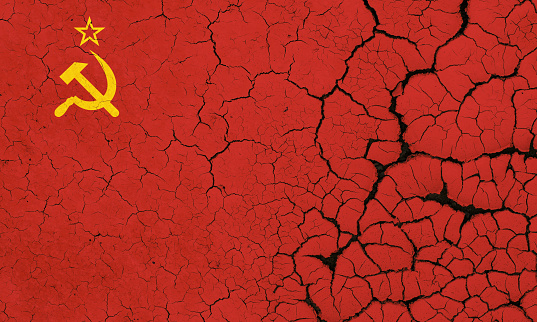


One of the founding fathers of the Soviet Union, Vladimir Lenin, once said: “No revolution is worth anything unless it can defend itself.” For 70 years, the first-of-its-kind socialist state managed to defend the revolution that gave it life. Of course, time is relative and 70 years isn’t long in the timeline of empires. Several centuries passed in the transition from Feudalism to Capitalism. Feudalism would have persisted even longer, were it not for the Bourgeois Revolution. The first revolts were easily crushed and any early capitalist “states” didn’t last long. Just as Feudalism fiercely fought against the emerging mode of production that would replace it, today Capitalism is similarly desperate to crush any existing Socialist State. Given this historical context, it is actually surprising that the USSR lasted as long as it did. Remarkably, its collapse was almost free of bloodshed. So what led to the fall of the Soviet Union? This first installment of this series explores external factors that contributed to its dissolution, while the second will discuss internal ones.

If something is going to collapse on its own, why get involved, unless you want to prevent it? According to western imperialist propaganda, the Soviet Union had been from its inception an experiment doomed to fail. But if the USSR really was failing badly, then why did the US expend so much time and effort to sabotage and bring it down?
Immediately following the October Revolution in 1917, a coalition of fourteen countries led by the US and the UK invaded the Soviet Union with the pretext of preventing war supplies from falling into German hands. Tens of thousands of soldiers and civilians died as a result of that undeclared war. “The Great Conspiracy Against Russia”, written in 1946 by journalists Michael Sayers and Albert E. Kahn, describes the failed intervention in detail, including key events on each front. They write about a series of plots against the Soviet Union, from the anti-Bolsheviks and interventionists of 1917-1918 to the Trotskyites and Nationalists of the 1920s and 1930s. After seven long years (1918-1925), the Allied Intervention was ultimately unable to stop the new Soviet Union. But the intervention did contribute greatly to the suffering experienced by citizens there. The imperialist coalition thereby hammered the first nail into the USSR’s coffin.

Western forces didn’t wait until the end of the war to involve their agents. In fact, their master spies played an outsized role in the attempt to suppress the Bolshevik Revolution and prevent it from spreading worldwide. Raymond Robins, Bruce Lockhart, and Sidney Reilly were just some of the numerous western agents inside the Soviet Union from the very beginning, ‘gathering espionage material, advising and encouraging the anti-Soviet elements’. The ‘Ace of Spies,’ eventually killed in 1925, was a man named Sidney Reilly (pictured below). A Russian-born linguist fluent in seven languages, Reilly was heralded by newspapers as “the greatest spy in history” and inspired Ian Fleming to create his character, James Bond. Reilly was not the only spy honored with nicknames and featured in books and movies. Adolf Tolkachev, a Soviet electronics engineer who provided secret materials to the US Central Intelligence Agency from 1979 – 1985, became known as ‘the billion dollar spy,’ as detailed in David E. Hoffman’s book about his life, espionage activities, and execution. Another external factor leading to the demise of the USSR was the hundreds, if not thousands, of spies whose work went undetected.

World War II arose in part because the West used the Third Reich to try to destroy the USSR. Much has been written about WWII’s devastating impact on humanity, particularly in the Soviet Union. Since the western theater was fought mostly on USSR territory, it saw the devastation and massive casualties, with 27 million human lives lost. The USSR, then less than 20 years old, had just fended off the intervention and begun to establish itself on the world stage, only then to be betrayed, savagely beaten, and punished for its very existence.
Following World War II, the United States escaped mostly unscathed. The US was soon leveraging its economic power to impose sanctions on the Soviet Union. In 1948, the United States began an economic war against the USSR that would last over fifty years. The Department of Commerce restricted exports to the Soviet Union and the US Congress passed these restrictions into law with the Export Control Act of 1949. The legislation was presented to the public as a temporary defense measure to keep arms out of enemy hands, but the Korean War and the ensuing Cold War soon allowed for such measures to be made permanent and expanded.
For many years, the United States continued to escalate its embargo against the Soviet Union. In 1983, Ronald Reagan approved National Security Decision Directive 75, dubbed ‘Reagan’s Secret Strategy for Defeating the Soviet Union.’ For more on how sanctions affected daily life for Soviet citizens, and the major internal factors contributing to the fall of the USSR, stay tuned for the second part of this series!